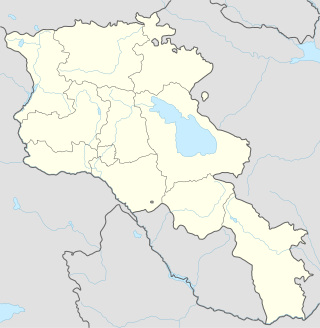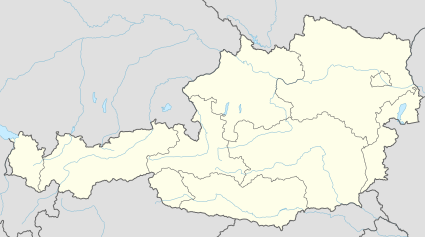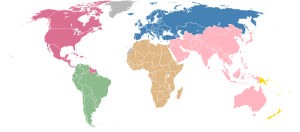List of top-division football clubs in UEFA countries: Difference between revisions
Preacher lad (talk | contribs) |
|||
| Line 138: | Line 138: | ||
}} |
}} |
||
Armenia gained independence in 1991, following the break-up of the [[Soviet Union]]. Organised football had been played in Armenia since 1936, as part of the Soviet football system. The Football Federation of Armenia gained UEFA affiliation in 1992, and the league ran as the national championship for the first time in the same year.<ref name=Armenialist>{{cite web|url=http://www.rsssf.com/tablesa/armechamp.html|title=Armenia: List of champions|publisher=Rec.Sport.Soccer Statistics Foundation|accessdate=24 February 2011|date=26 November 2010|first1=Erlan|last1=Manaschev|first2=Karel|last2=Stokkermans}}</ref><ref>{{cite web|url=http://www.uefa.com/memberassociations/association=arm/index.html|title=Member associations: Armenia|publisher=UEFA|accessdate=24 February 2011}}</ref> Since independence, the country's most successful team are Pyunik |
Armenia gained independence in 1991, following the break-up of the [[Soviet Union]]. Organised football had been played in Armenia since 1936, as part of the Soviet football system. The Football Federation of Armenia gained UEFA affiliation in 1992, and the league ran as the national championship for the first time in the same year.<ref name=Armenialist>{{cite web|url=http://www.rsssf.com/tablesa/armechamp.html|title=Armenia: List of champions|publisher=Rec.Sport.Soccer Statistics Foundation|accessdate=24 February 2011|date=26 November 2010|first1=Erlan|last1=Manaschev|first2=Karel|last2=Stokkermans}}</ref><ref>{{cite web|url=http://www.uefa.com/memberassociations/association=arm/index.html|title=Member associations: Armenia|publisher=UEFA|accessdate=24 February 2011}}</ref> Since independence, the country's most successful team are FC Pyunik, who have won ten league titles.<ref name=Armenialist/>|group=A}} As of the 2012 season, eight teams compete in the Premier League. Each team plays each other team four times, and at the end of the season the bottom team is relegated to the [[Armenian First League|First League]].<ref name="Armenia"/> |
||
''As of [[2012 Armenian Premier League|2012–13 season]]:''<ref name="Armenia">{{cite web|url=http://uk.soccerway.com/national/armenia/premier-league/2012/regular-season/| title=Armenia: Premier League | publisher=Global Sports Media |work=Soccerway |accessdate=13 September 2012}}</ref> |
''As of [[2012 Armenian Premier League|2012–13 season]]:''<ref name="Armenia">{{cite web|url=http://uk.soccerway.com/national/armenia/premier-league/2012/regular-season/| title=Armenia: Premier League | publisher=Global Sports Media |work=Soccerway |accessdate=13 September 2012}}</ref> |
||
Revision as of 05:11, 21 May 2013
This article needs to be updated. (June 2012) |

The Union of European Football Associations (UEFA) is the administrative and controlling body for European football. It consists of 53 member associations, each of which is responsible for governing football in their respective countries.[1]
All widely-recognised sovereign states located entirely within Europe are members, with the exceptions of the United Kingdom, Monaco and Vatican City. Eight states partially or entirely outside of Europe are also members: Armenia, Azerbaijan, Russia, Georgia, Kazakhstan, Israel, Cyprus and Turkey.[1] The United Kingdom is divided into the four separate football associations of England, Northern Ireland, Scotland, and Wales; each association has a separate UEFA membership. The Faroe Islands, an autonomous region of Denmark, also has its own football association which is a member of UEFA.[1] On the other hand, the football association of Gibraltar, a British Overseas Territory, had its membership application rejected in 2007.[2] UEFA regulations stipulate that all new applicants must have United Nations recognition.[3] Kosovo (recognised by 114 of the United Nations' 193 members) is therefore not currently eligible for membership.[4]
Each UEFA member has its own football league system, except Liechtenstein.[5] Clubs playing in each top-level league compete for the title as the country's club champions. Clubs also compete in the league and national cup competitions for places in the following season's UEFA club competitions, the UEFA Champions League and UEFA Europa League. Due to promotion and relegation, the clubs playing in the top-level league are different every season, except in San Marino where there is only one level.[6]
Some clubs play in a national football league other than their own country's. Where this is the case the club is noted as such.
| Club name | Club finished the previous season as league champions. |
UEFA coefficients
The UEFA league coefficients, also known as the UEFA rankings, are used to rank the leagues of Europe, and thus determine the number of clubs from a league that will participate in UEFA Champions League and UEFA Europa League. A country's ranking determines the number of teams competing in the season after the next; the 2009 rankings determined qualification for European competitions in the 2010–11 season.[7]
A country's ranking is calculated based on the results of its clubs in UEFA competitions over the past five seasons. Two points are awarded for each win by a club, and one for a draw. If a game goes to extra time, the result at the end of time is used to calculate ranking points; if the match goes to a penalty shootout, it is considered to be a draw for the purposes of the coefficient system. The number of points awarded to a country's clubs are added together, and then divided by the number of clubs that participated in European competitions that season. This number is then rounded to three decimal places; two and two thirds would become 2.667.[7]
For the league coefficient the season's league coefficients for the last five seasons must be added up. In the preliminary rounds of both the Champions League and Europa League, the awarded points are halved. Bonus points for certain achievements are added to the number of points scored in a season. Bonus points are allocated for:
- Qualifying for the Champions League group phase. (4 bonus points)
- Reaching the second round of the Champions League. (5 bonus points)
- Reaching the quarter, semi and final of both Champions League and Europa League. (1 bonus point)[7]
Albania
- Country:
 Albania
Albania - Football association: Football Association of Albania
- Top-level league: Albanian Superliga (Albanian: Kategoria superiore)
- UEFA ranking: 44th[8]
The top division of Albanian football was formed in 1930, and the inaugural title was won by SK Tirana (now known as KF Tirana). Tirana are the most successful team in the league's history, having won the competition on 24 occasions, followed by KS Dinamo Tirana with 18 championships, and Partizani Tirana—now playing in the First Division—with 15.[9] The league became affiliated with UEFA in 1954.[10] As of 2012–13, fourteen teams compete in the division.[11] The system for determining relegation frequently changes; in the 2011–12 season, the bottom two teams were relegated to the First Division, while each of the three teams above them competed in a relegation playoff against First Division opposition; the winner of each match would compete in the Superliga for the following season, the loser in the First Division.[12]
As of 2012–13 season:[11]
Andorra

- Country:
 Andorra
Andorra - Football association: Andorran Football Federation
- Top-level league: Andorran First Division (Catalan: Primera Divisió)
- UEFA ranking: 52nd[8]
Andorra's national league system was formed in 1993, and the Andorran Football Federation gained UEFA membership in 1996.[13] Records from the league's first three seasons are incomplete, but FC Santa Coloma have won more First Division titles than any other team.[14] Another Andorran football club, FC Andorra, play in the Spanish football league system. In recent years, eight teams have competed in the First Division. Each team plays two matches against the other seven clubs. After fourteen games, the league splits into two groups, with teams carrying their previous points totals forward. The top four teams play each other a further two times in the championship round to decide 1st–4th places, while the bottom four teams do likewise in the relegation round, to determine the 5th–8th positions. At the end of the season, the bottom-placed team is relegated, while the seventh-placed team plays a two-legged play-off against the second-placed team in the Second Division to decide which team plays in which division for the following season.[15]
Stadia and locations
As of 2012–13 season:[15]
Armenia
- Country:
 Armenia
Armenia - Football association: Football Federation of Armenia
- Top-level league: Armenian Premier League (Armenian: «Բարձրագույն Խումբ»)
- UEFA Ranking: 47th[8]
Armenia gained independence in 1991, following the break-up of the Soviet Union. Organised football had been played in Armenia since 1936, as part of the Soviet football system. The Football Federation of Armenia gained UEFA affiliation in 1992, and the league ran as the national championship for the first time in the same year.[16][17] Since independence, the country's most successful team are FC Pyunik, who have won ten league titles.[16]|group=A}} As of the 2012 season, eight teams compete in the Premier League. Each team plays each other team four times, and at the end of the season the bottom team is relegated to the First League.[18]
As of 2012–13 season:[18]
| Club | Location |
|---|---|
| FC Ararat Yerevan | Yerevan |
| FC Banants | Yerevan |
| Gandzasar FC | Kapan |
| Impuls FC Dilijan | Dilijan |
| Mika FC | Yerevan |
| Pyunik FC[16] | Yerevan |
| Shirak FC | Gyumri |
| Ulisses FC | Yerevan |
Austria

- Country:
 Austria
Austria - Football association: Austrian Football Association
- Top-level league: Austrian Bundesliga (German: Österreichische Fußball-Bundesliga)
- UEFA ranking: 15th[19]
An Austrian football championship has taken place since 1911–12, although prior to Anschluss with Germany in 1938, only clubs from Vienna, the country's capital, participated. The Austrian Football Association joined UEFA in 1954, the year of the European governing body's formation.[20][21] The most successful teams are SK Rapid Wien and FK Austria Wien, with 32 and 23 league titles respectively. FC Wacker Innsbruck are the most successful team from outside of the capital, having won 10 league championships.[22] As of the 2009–10 season, ten teams compete in the Austrian Bundesliga. They play each other four times, with the bottom club being relegated to the Austrian First League.[23]
Stadia and locations
As of 2012–13 season:[23]
Azerbaijan
- Country:
 Azerbaijan
Azerbaijan - Football association: Association of Football Federations of Azerbaijan
- Top-level league: Azerbaijan Premier League (Azerbaijani: Azərbaycan Premyer Liqası)
- UEFA ranking: 37th[8]
Although the country was part of the Soviet Union, the first Azerbaijan-wide football competition took place in 1928, and became an annual occurrence from 1934. Following the break-up of the Soviet Union in 1991, the first independent Azeri championship took place in 1992, and the Association of Football Federations of Azerbaijan gained UEFA affiliation in 1994[24][25] Since independence, the country's most successful team are PFC Neftchi Baku, with seven league titles. As of the 2012–13 season, twelve teams compete in the Azerbaijan Premier League. Teams play one another twice, before the league is split into a top six and a bottom six. At this stage, results against teams in the other half of the league are discarded, meaning that each team has ten results carried forward to the second phase of the season. Teams play the five other teams in their half of the league two further times, to decide the final placing. There was no relegation to the Azerbaijan First Division at the end of the 2011–12 season.[26][27]

As of 2012–13 season:[29]
Belarus
- Country:
 Belarus
Belarus - Football association: Football Federation of Belarus
- Top-level league: Belarusian Premier League (Belarusian: Вышэйшая ліга)
- UEFA ranking: 23rd[8]
Belarus declared independence from the Soviet Union in 1990. Its independence was widely recognised within Europe in 1991, an independent national championship began in 1992, and UEFA membership followed in 1993.[30] Up to the end of the 2010 season, the most successful teams are FC Dinamo Minsk and FC BATE, with seven league championships apiece, although BATE have won five titles in the five most recently completed seasons.[31] As of the 2012 season, eleven teams compete in the Belarusian Premier League. At the end of the season, the bottom team is relegated to the Belarusian First League, and the eleventh-placed Premier League team plays the second-placed First League team in a relegation play-off.[32]
As of 2013 season:[32]

Belgium
- Country:
 Belgium
Belgium - Football association: Belgian Football Association
- Top-level league: Belgian First Division (French: Championnat de Belgique, Dutch: Eerste klasse België)
- UEFA ranking: 13th[8]
Organised football reached Belgium in the 19th century; the Belgian Football Association was founded in 1895, and FC Liégeois became the country's first champions the following year. Belgium joined European football's governing body, UEFA, upon its formation in 1954.[33] Historically the country's most successful team are R.S.C. Anderlecht, with 30 league titles as of 2010.[34] The Belgian First Division currently consists of 16 teams. Initially, each team plays the other clubs twice for a total of 30 matches. At this point, the bottom two teams play a five match play-off, with the losing team relegating to the Belgian Second Division, while the winning team enters another relegation play-off with the second, third and fourth teams from the Second Division. The top six teams take half of their points (rounded up) into a championship play-off, playing each other two further times to determine the national champion. Teams that finish the regular season between 7th and 14th enter one of two four team groups. Each team plays the other three teams in its group home and away, and the winners of each group play each other in a two-legged play-off to decide Belgium's final UEFA Europa League place for the following season.[35]
As of 2012–13 season:[35]

Bosnia and Herzegovina
- Country:
 Bosnia and Herzegovina
Bosnia and Herzegovina - Football association: Football Association of Bosnia and Herzegovina
- Top-level league: Premier League of Bosnia and Herzegovina (Bosnian: Premijer liga Bosne i Hercegovine)
- UEFA ranking: 29th[8]
Prior to gaining independence from Yugoslavia, clubs from Bosnia and Herzegovina were eligible to compete in the Yugoslav First League, which they won three times. The country gained independence in 1992, and its Football Association gained UEFA membership in 1998.[36] Due to political tensions between Bosniaks, Bosnian Serbs and Bosnian Croats the country did not have a single national top division until the 2002–03 season, but rather two or three. Since then, Zrinjski, Široki Brijeg and Željezničar have won the title twice, while four other teams have won it once each.[37] As of 2012, the Premier League consists of 16 clubs. Each team plays the others twice; once at their own stadium, one at their opponent's. At the end of the season the bottom two clubs are relegated to either the First League of Bosnia and Herzegovina or the First League of the Republika Srpska.[38]
As of 2012–13 season:[38]
Bulgaria
- Country:
 Bulgaria
Bulgaria - Football association: Bulgarian Football Union
- Top-level league: Bulgarian A Professional Football Group (Bulgarian: "А" Професионална футболна група)
- UEFA ranking: 21st[8]
A national Bulgarian championship has been held in every year since 1924, although the 1924, 1927 and 1944 seasons were not completed. The country gained UEFA membership in 1954.[39] Historically, the most successful teams in Bulgarian football have been PFC CSKA Sofia and PFC Levski Sofia; no other team has won more than seven league titles.[40] As of 2010, the Bulgarian A Professional Football Group consists of 16 teams. Each team plays the others twice, once at each club's stadium. At the end of the season the bottom three clubs are relegated to the Bulgarian B Professional Football Group.[41]
As of 2010–11 season:[41]

Croatia
- Country:
 Croatia
Croatia - Football association: Croatian Football Federation
- Top-level league: Croatian First League (Croatian: Prva hrvatska nogometna liga)
- UEFA ranking: 22nd[8]
National Croatian leagues were organised in 1914 and during the Second World War, but during peacetime Croatia's biggest clubs competed in the Yugoslav First League. After Croatia declared independence from Yugoslavia in 1991, a national football league was formed in 1992, and the Croatian Football Federation gained UEFA membership in 1993.[42] Since its formation, the Croatian First League has been dominated by NK Dinamo Zagreb and HNK Hajduk Split; as of the end of the 2009–10 season, one of these teams has won the title in 18 of the league's 19 seasons.[43] The First League consists of 16 teams, who play one another twice. At the end of the season, the bottom three clubs are eligible for relegation. However, they are only relegated if clubs holding a licence to compete in the First League finish in the top five of the Croatian Second League. In 2009–10 only two clubs were relegated, as second-placed NK Pomorac Kostrena did not have a top-division licence.[44]
As of 2010–11 season:[44]

Cyprus
- Country:
 Cyprus
Cyprus - Football association: Cyprus Football Association
- Top-level league: Cypriot First Division (Greek: Πρωτάθλημα Α' Κατηγορίας, Turkish: Kıbrıs Birinci Ligi)
- UEFA ranking: 20th[8]
The first national Cypriot football championship was in the 1931–32 season. The Cyprus Football Association organised the Cypriot league for the first time in 1934–35, and gained UEFA membership in 1962.[45] The most successful teams in Cypriot league history are APOEL F.C. and AC Omonia; as of 2010 both clubs have won 20 national titles.[46] The First Division consists of fourteen teams, each of whom initially play one another twice. After 26 games the bottom two teams are relegated to the Cypriot Second Division. The remaining twelve teams retain all of their points, and enter into three groups of four, playing the other three teams in their group two further times. The winners of the group of the top four teams become champions, while the bottom-placed team in the group of the ninth to twelfth-placed teams is relegated to the Second Division.[47]
As of 2010–11 season:[47]
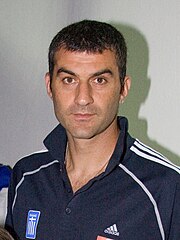
Czech Republic
- Country:
 Czech Republic
Czech Republic - Football association: Football Association of the Czech Republic
- Top-level league: Czech First League (Czech: 1. česká fotbalová liga)
- UEFA ranking: 18th[8]
The Czech Republic's borders have changed on several occasions since the first national Czech football league in 1896. The Football Association of the Czech Republic, formed in 1901, is a direct continuation of the organisation that ran football in Czechoslovakia, and gained UEFA membership in 1954.[48] The current First League began in the 1993–94 season, after the separation of Czechoslovakia into the Czech Republic and Slovakia on 1 January 1993. Since then, the most successful are AC Sparta Prague, who have won 11 titles.[49][50] The First League consists of sixteen teams, which play one another twice for a total of 30 games. At the end of the season, the bottom two teams are relegated to the Czech Second League[51]
As of 2011–12 season:[51]

Denmark
- Country:
 Denmark
Denmark - Football association: Danish Football Association
- Top-level league: Danish Superliga (Danish: Superligaen)
- UEFA ranking: 12th[8]
A national Danish league first took place in 1912–13, and the Danish title has been awarded annually since, with the exceptions of 1915 and 1928.[52] The Danish Football Association became one of UEFA's inaugural members in 1954.[53] Kjøbenhavns Boldklub remain the league's most successful team; they won 15 league titles prior to a merge with Boldklubben 1903 to form FC Copenhagen in 1992. In total, FC Copenhagen and its predecessors have won 30 Danish championships.[52] As of the 2010–11 season, the Danish Superliga consists of 12 teams. Each team plays the others three times; one club hosts two matches, the other club one. At the end of the season the bottom two teams are relegated to the Danish 1st Division.[54]
As of 2012–13 season:[54]

England
- Country:
 England
England - Football association: The Football Association
- Top-level league: Premier League
- UEFA ranking: 1st[8]
Founded in 1888, the Football League was the world's first national football league.[55] The inaugural competition was won by Preston North End, who remained unbeaten throughout the entire season. It was the top level football league in England from its foundation until 1992, when the 22 clubs comprising the First Division resigned from the Football League to form the new FA Premier League.[55] As of the 2012–13 season the Premier League comprises 20 clubs;[56] each team plays every other team twice, with the bottom 3 clubs at the end of the season relegated to the Football League Championship. The most successful club is Manchester United, who have won the league 19 times.[57]
As of 2012–13 season:[58]
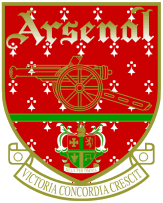
Estonia

- Country:
 Estonia
Estonia - Football association: Estonian Football Association
- Top-level league: Estonian Premier Division (Estonian: Meistriliiga)
- UEFA ranking: 45th[8]
An independent Estonian league took place between 1921 and 1940. However, after the Second World War it became part of the Soviet Union, and became a regional system. Estonia regained independence after the dissolution of the USSR, organising the first national championship in 52 years in 1992, the same year that the Estonian Football Association joined UEFA.[60][61] FC Flora Tallinn and FC Levadia Tallinn are the most successful teams in the modern era, with seven league titles apiece as of the end of the 2009 season.[60] In 2010, the Premier Division consists of 10 teams, which play one another four times. At the end of the season the bottom team is relegated to the second level of Estonian football, while the ninth-placed team enters into a relegation playoff.[62]
As of 2010 season:[62]
Faroe Islands

- Country:
 Faroe Islands
Faroe Islands - Football association: Faroe Islands Football Association
- Top-level league: Faroe Islands Premier League Football (Faroese: Formuladeildin)
- UEFA ranking: 50th[8]
The Faroe Islands are a constituent country of the Kingdom of Denmark, which also comprises Greenland and Denmark itself. The league was formed in 1942, and has been contested annually since, with the exception of 1944 due to a lack of available balls.[64] The Faroe Islands gained UEFA recognition in 1992.[65] The most successful teams are Havnar Bóltfelag and KÍ Klaksvík, with 20 and 17 Premier League titles respectively as of the completed 2009 season. In 2010, 10 clubs compete in the Premier League. They play each other three times, with the bottom two teams relegated to the First Division.[66]
As of 2010 season:[66]

Finland
- Country:
 Finland
Finland - Football association: Football Association of Finland
- Top-level league: Finnish Premier League (Finnish: Veikkausliiga, Swedish: Tipsligan)
- UEFA ranking: 30th[8]
Finland's current league has been contested annually since 1898, with the exceptions of 1914 and 1943.[68] The most successful team are HJK Helsinki with 22 titles; as of 2010, no other team has won 10 or more. However, between 1920 and 1948 a rival championship operated, organised by the Finnish Workers' Sports Federation. Frequent champions in that competition before it came under the jurisdiction of the Football Association of Finland included Kullervo Helsinki, Vesa Helsinki and Tampereen Pallo-Veikot.[69] The Premier League consists of 14 teams, which each play one another home and away for a total of 26 matches. At the end of the season the bottom club is relegated to the First Division, while the 13th-placed team enters into a two-legged relegation play-off with the runners up of the First Division.[70]
As of 2010 season:[71]

France
- Country:
 France
France - Football association: French Football Federation
- Top-level league: Ligue 1 (French: Ligue 1/Le Championnat)
- UEFA ranking: 5th[8]
France's first football team—Le Havre AC—formed in 1872. The first French championship was first held in 1894, but only featured teams from the capital, Paris. Between 1896 and 1912, national championships were organised by several competing federations; the first universally recognised national championship took place in the 1912–13 season. However, it only lasted two seasons; from the outbreak of the First World War in 1914, French football operated on a regional basis until 1932. A national league resumed between 1932 and 1939, and has operated annually since the conclusion of the Second World War in 1945.[73] As of the 2010–11 season, 20 teams compete in Ligue 1. Each team plays the other nineteen sides home and away, and at the end of the season the bottom three teams are relegated to Ligue 2.[74] So far, Olympique de Marseille are the only French club to have won the UEFA Champions League, in 1993.
As of 2012–13 season:
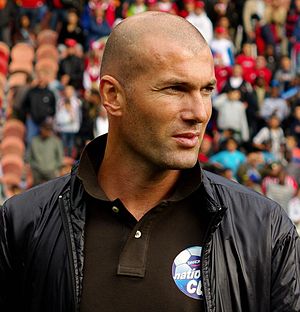
Georgia
- Country:
 Georgia
Georgia - Football association: Georgian Football Federation
- Top-level league: Georgian Top League (Georgian: უმაღლესი ლიგა)
- UEFA ranking: 36th[8]
A Georgian football championship first took place in 1926, as part of the Soviet football system. The first independent championship took place in 1990, despite the fact that Georgia remained a Soviet state until 1991. Upon independence, Georgia subsequently joined UEFA and FIFA in 1992.[75] Currently, ten teams compete in the Georgian Top League. They play each other four times, with the bottom two teams relegated to the First League.[76] The most successful team since independence are FC Dinamo Tbilisi; as of the 2009–10 season they have won 13 of 21 league titles. Their closest challengers are FC Torpedo Kutaisi, who have won three titles.[77]
As of 2010–11 season:[76]
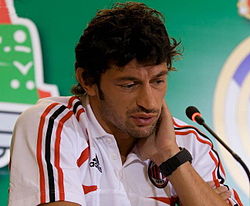
Germany
- Country:
 Germany
Germany - Football association: German Football Association
- Top-level league: Bundesliga (German: Fußball-Bundesliga)
- UEFA ranking: 3rd[8]
With Hertha BSC Berlin being relegated in 2010–11 the Bundesliga became the only European top-division to not have a club from the capital participating.[78]
As of 2011–12 season:[79]

Greece
- Country:
 Greece
Greece - Football association: Hellenic Football Federation
- Top-level league: Greek Super League (Greek: Σούπερ Λίγκα Ελλάδα)
- UEFA ranking: 11th[8]
As of 2012–13 season:[81]

Hungary
- Country:
 Hungary
Hungary - Football association: Hungarian Football Federation
- Top-level league: Hungarian National Championship (Hungarian: Nemzeti Bajnokság I)
- UEFA ranking: 32nd[8]
As of 2010–11 season:[83]

Iceland
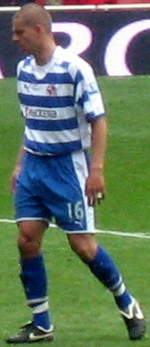
- Country:
 Iceland
Iceland - Football association: Football Association of Iceland
- Top-level league: Icelandic Premier Division (Icelandic: Úrvalsdeild)
- UEFA ranking: 40th[8]
As of 2012 season:[85]
Israel
- Country:
 Israel
Israel - Football association: Israel Football Association
- Top-level league: Israeli Premier League (Hebrew: ליגת העל)
- UEFA ranking: 17th[8]
As of 2012–13 season:

Italy
- Country:
 Italy
Italy - Football association: Federazione Italiana Giuoco Calcio
- Top-level league: Serie A (English: Series A)
- UEFA ranking: 4th[8]
As of 2012–13 season:[87]

Kazakhstan
- Country:
 Kazakhstan
Kazakhstan - Football association: Football Union of Kazakhstan
- Top-level league: Kazakhstan Super League (Kazakh: Қазақстан Премьер Лигасы)
- UEFA ranking: 41st[8]
As of 2010 season:[88]

Latvia
- Country:
 Latvia
Latvia - Football association: Latvian Football Federation
- Top-level league: Latvian Higher League (Latvian: Virslīga)
- UEFA ranking: 35th[8]
As of 2010 season:[90]

Liechtenstein
- Country:
 Liechtenstein
Liechtenstein - Football association: Liechtenstein Football Association
- Top-level league: None
- UEFA ranking: 42nd[8]
A Liechtenstein national football league operated for three seasons from 1934 until 1936. The league was also organised in 1937, but only FC Triesen entered; Triesen were awarded the title by default, and the league was never revived.[92] The clubs listed below play in the Swiss football league system; no other clubs in Liechtenstein compete in a national league.[93] They also compete in the Liechtenstein Football Cup, with the winner representing Liechtenstein in the UEFA Europa League. Liechtenstein clubs do not play in the Swiss Cup, and are not eligible to qualify for European competitions via the Swiss league system. Since the formation of the Liechtenstein Football Cup, the most successful team are FC Vaduz, with 39 wins as of 2010.[94]

The following clubs compete in the Swiss football league system:[93]
| Club | Location |
|---|---|
| FC Balzers | Balzers |
| USV Eschen/Mauren | Eschen and Mauren |
| FC Ruggell | Ruggell |
| FC Schaan | Schaan |
| FC Triesen | Triesen |
| FC Triesenberg | Triesenberg |
| FC Vaduz | Vaduz |
Lithuania
- Country:
 Lithuania
Lithuania - Football association: Lithuanian Football Federation
- Top-level league: A League (Lithuanian: A Lyga)
- UEFA ranking: 34th[8]
As of 2010 season:[95]

Luxembourg
- Country:
 Luxembourg
Luxembourg - Football association: Luxembourg Football Federation
- Top-level league: Luxembourg National Division (Luxembourgish: Nationaldivisioun French: Division Nationale)
- UEFA ranking: 51st[8]
As of 2010–11 season:[97]
Malta
- Country:
 Malta
Malta - Football association: Malta Football Association
- Top-level league: Maltese Premier League (Maltese: Il-Premjer)
- UEFA ranking: 48th[8]
As of 2010–11 season:[98]

Moldova
- Country:
 Moldova
Moldova - Football association: Football Association of Moldova
- Top-level league: Moldovan National Division (Romanian: Divizia Naţională)
- UEFA ranking: 33rd[8]
As of 2010–11 season:[99]

Montenegro
- Country:
 Montenegro
Montenegro - Football association: Football Association of Montenegro
- Top-level league: Montenegrin First League (Montenegrin: Prva crnogorska fudbalska liga)
- UEFA ranking: 43rd[8]
As of 2010–11 season:[100]
Netherlands
- Country:
 Netherlands
Netherlands - Football association: Royal Dutch Football Association
- Top-level league: Eredivisie (English: Honorary Division)
- UEFA ranking: 9th[8]
As of 2010–11 season:[101]
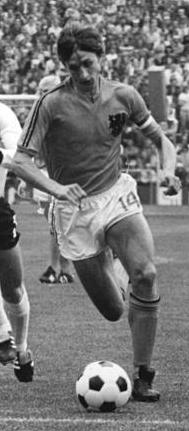
Northern Ireland
- Country:
 Northern Ireland
Northern Ireland - Football association: Irish Football Association
- Top-level league: IFA Premiership
- UEFA ranking: 49th[8]
As of 2010–11 season:[102]

- Derry City F.C., a club from Northern Ireland, has competed in the Republic of Ireland's football league system, the League of Ireland, since 1985.
Norway
- Country:
 Norway
Norway - Football association: Football Association of Norway (NFF)
- Top-level league: Norwegian Premier League (Norwegian: Eliteserien)
- UEFA ranking: 26th[8]
As of 2012 season:[103]

Poland
- Country:
 Poland
Poland - Football association: Polish Football Association
- Top-level league: Ekstraklasa
- UEFA ranking: 24th[8]
As of 2010–11 season:[105]

Portugal
- Country:
 Portugal
Portugal - Football association: Portuguese Football Federation
- Top-level league: Portuguese Liga
- UEFA ranking: 6th[8]
As of 2010–11 season:[106]

Republic of Ireland
- Country:
 Republic of Ireland
Republic of Ireland - Football association: Football Association of Ireland
- Top-level league: League of Ireland Premier Division (Irish: Príomhroinn Sraith na hÉireann)
- UEFA ranking: 31st[8]
As of 2012 season:[107]

Republic of Macedonia
- Country:
 Republic of Macedonia
Republic of Macedonia - Football association: Football Federation of Macedonia
- Top-level league: Macedonian First League (Macedonian: Прва македонска Фудбалска Лига)
- UEFA ranking: 39th[8]
As of 2010–11 season:[109]

Romania
- Country:
 Romania
Romania - Football association: Romanian Football Federation
- Top-level league: Liga I
- UEFA ranking: 14th[8]
As of 2012–13 season:''[110]

Russia
- Country:
 Russia
Russia - Football association: Football Union of Russia
- Top-level league: Russian Premier League (Russian: Российская футбольная премьер-лига)
- UEFA ranking: 7th[8]
As of 2010 season:[111]

San Marino
- Country:
 San Marino
San Marino - Football association: San Marino Football Federation
- League: Sammarinese Football Championship (Italian: Campionato Sammarinese di Calcio)
- UEFA ranking: 53rd[8]
This is a complete list of football clubs in San Marino (as San Marino has only one level domestic amateur league), apart from San Marino Calcio, the only professional Sammarinese club, which in 2010–11 season competes in Lega Pro Seconda Divisione of the Italian football league system.
As of 2010–11 season:[113]
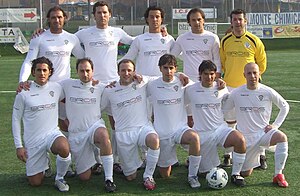
Scotland
- Country:
 Scotland
Scotland - Football association: Scottish Football Association
- Top-level league: Scottish Premier League (Scots: Scots Premier League)
- UEFA ranking: 15th[8]
As of 2012-13 season:[114]

Serbia

- Country:
 Serbia
Serbia - Football association: Football Association of Serbia
- Top-level league: Serbian Superliga (Serbian: Суперлига Србије)
- UEFA ranking: 27th[8]
As of 2010–11 season:[116]
Slovakia
- Country:
 Slovakia
Slovakia - Football association: Slovak Football Association
- Top-level league: Slovak Superliga (Slovak: Corgoň Liga)
- UEFA ranking: 25th[8]
As of 2010–11 season:[117]

Slovenia
- Country:
 Slovenia
Slovenia - Football association: Football Association of Slovenia
- Top-level league: Slovenian First Football League (Slovene: Prva Slovenska nogometna liga)
- UEFA ranking: 38th[8]
As of 2010–11 season:[118]
Spain
- Country:
 Spain
Spain - Football association: Royal Spanish Football Federation
- Top-level league: La Liga
- UEFA ranking: 2nd[8]
As of 2011–12 season:

Sweden
- Country:
 Sweden
Sweden - Football association: Swedish Football Association
- Top-level league: Allsvenskan (English: The All-Swedish)
- UEFA ranking: 28th[8]
A Swedish championship was first organised in 1896, and the champions were decided by a knockout cup format until 1925, when Allsvenskan was formed.[120] Sweden was one of the founding members of UEFA in 1954.[121] As of the 2010 season, IFK Göteborg have won the most Swedish Champions titles (18), followed by Malmö FF (16) and IFK Norrköping (12). But Malmö FF has won the most League titles, 19. IFK Göteborg has 13. In 2011, 16 teams compete in Allsvenskan. They each play one another home and away, for a total of 30 games. The bottom two teams are relegated to the Superettan (English: The Super One), and the 14th-placed Allsvenskan team enters into a relegation playoff with the 3rd-placed Superettan team to decide which will play in Allsvenskan for the following season.[122][123]
As of 2011 season:[123]

Switzerland

- Country:
 Switzerland
Switzerland - Football association: Swiss Football Association
- Top-level league: Swiss Super League (German: Schweizer Fussballmeisterschaft)
- UEFA ranking: 16th[8]
As of 2010–11 season:
Turkey
- Country:
 Turkey
Turkey - Football association: Turkish Football Federation
- Top-level league: Turkish Super League (Turkish: Süper Lig)
- UEFA ranking: 10th[8]
Turkish football operated on a regional basis until the 1950s. A national knockout tournament took place in 1957 and 1958, to decide European qualification. The Turkish Football Federation retrospectively recognised these tournaments as deciding the Turkish champions; both competitions were won by Beşiktaş J.K.[125] A national league was formed in 1959, and has been held annually from then onwards.[125] Since the formation of a national league, the most successful team is Fenerbahçe and Galatasaray with 18 league titles as of the completed 2011–12 season. Currently, 18 teams compete in the Super League. Each team plays the other teams home and away, with the bottom three teams relegated to the TFF First League for the following season.[126]
As of 2010–11 season:

Ukraine
- Country:
 Ukraine
Ukraine - Football association: Football Federation of Ukraine
- Top-level league: Ukrainian Premier League (Ukrainian: Прем'єр-ліга)
- UEFA ranking: 8th[8]
As a member of the Soviet Union, Ukraine's league operated as a feeder to the national Soviet leagues, meaning that until 1992 the strongest Ukrainian teams did not take part.[127] The Football Federation of Ukraine was formed shortly after the country achieved independence in 1991, and gained UEFA membership the following year.[128] Since the formation of a national league, FC Dynamo Kyiv have won thirteen titles, FC Shakhtar Donetsk five, and SC Tavriya Simferopol one, as of the completed 2009–10 season.[127] Currently, 16 teams compete in the Premier League. They play one another twice, and at the end of the season the bottom two teams are relegated to the Ukrainian First League.[129]
As of 2010–11 season:
Wales
- Country:
 Wales
Wales - Football association: Football Association of Wales
- Top-level league: Welsh Premier League (Welsh: Cynghrair Cymru)
- UEFA ranking: 46th[8]
Although Wales joined UEFA in 1954, Welsh football operated on a regional basis until 1992, with no national championship.[130][131] Several Welsh clubs play not in the Welsh football league system, but in the English football league system. Currently, one Welsh club compete in The Premier League: Swansea City A.F.C. (Top Flight). and Cardiff City F.C. play in the Football League Championship (second level of English football). Four other Welsh clubs participate lower down the English football league system: Newport County A.F.C., Wrexham F.C., Colwyn Bay F.C. and Merthyr Town F.C.. Despite competing in Football Association competitions, the latter four are under the jurisiction of the Football Association of Wales.[132] Until 2011 Swansea City and Cardiff City had similar arrangements with the FAW but are now under jurisdiction of The Football Association.[133] The most successful Welsh club since the formation of the Welsh Premier League are Barry Town F.C., with 7 league titles.[131] As of 2010–11, 12 teams compete in the Welsh Premier league. Relegation to and promotion from lower regional leagues is in part dictated by whether or not clubs can obtain a Premier League licence; only clubs able to obtain a licence are eligible for promotion, and clubs which fail to obtain one are relegated regardless of their final league position.[134]
As of 2010–11 season:

- ^ In 2003, Total Network Solutions F.C., representing Llansantffraid, merged with Oswestry Town F.C., an English club that had historically played in the Welsh football structure. The merged club, which became The New Saints in 2006, played in Llansantffraid until moving to a ground in Oswestry starting with the 2007–08 season. The two communities are 8 miles/13 km apart.[135]
References
- "Football Europe". UEFA. Retrieved 20 July 2010.
- "Domestic results (Europe)". Rec.Sport.Soccer Statistics Foundation. Retrieved 20 July 2010.
- "Domestic league history". Rec.Sport.Soccer Statistics Foundation. Retrieved 11 August 2010.
- ^ a b c Ornstein, David (8 December 2008). "Big four to feel wind of European change". BBC Sport. Retrieved 18 July 2010.
- ^ "Gibraltar fail to get Uefa place". BBC Sport. 26 January 2007. Retrieved 18 July 2010.
- ^ "Statutes: Edition June 2007" (PDF). UEFA. 26 January 2007. Retrieved 20 August 2010.
- ^ Crawford, Charles (13 June 2012). "Serbia's stern diplomatic rearguard action over Kosovo". The Daily Telegraph. Retrieved 9 September 2012.
- ^ "Liechtenstein making strides". UEFA. 21 February 2010. Retrieved 19 July 2010.
- ^ "Solid foundations bolster San Marino". UEFA. 21 February 2010. Retrieved 19 July 2010.
- ^ a b c "Regulations of the UEFA Champions League 2010/11" (PDF). UEFA. pp. 41–48. Retrieved 16 August 2010.
- ^ a b c d e f g h i j k l m n o p q r s t u v w x y z aa ab ac ad ae af ag ah ai aj ak al am an ao ap aq ar as at au av aw ax ay az 2011 rankings are used, as these determine qualification for European competitions in the 2012–13 season. Kassies, Bert. "2011 UEFA Country ranking". Retrieved 9 September 2012.
- ^ Boesenberg, Eric (23 April 2010). "Albania: List of champions". Rec.Sport.Soccer Statistics Foundation. Retrieved 9 August 2010.
- ^ "Member associations: Albania". UEFA. Retrieved 9 September 2012.
- ^ a b c Nappi, Giovanni (2 June 2010). "Albania 2009/10". Rec.Sport.Soccer Statistics Foundation. Retrieved 2 August 2010.
- ^ "Albania: Super League 2011/12". Global Sports Media. Soccerway. Retrieved 9 September 2012.
- ^ "Member associations: Andorra". UEFA. Retrieved 10 August 2010.
- ^ CE Principat have three titles, and were runners-up in the 1993–94 season, meaning that they cannot match Santa Coloma's six confirmed league titles. Kramarsic, Igor (31 May 2012). "Andorra: List of champions". Rec.Sport.Soccer Statistics Foundation. Retrieved 9 September 2012.
- ^ a b c "Andorra: La Divisio 2012/13". Global Sports Media. Soccerway. Retrieved 9 September 2012.
- ^ a b c Manaschev, Erlan; Stokkermans, Karel (26 November 2010). "Armenia: List of champions". Rec.Sport.Soccer Statistics Foundation. Retrieved 24 February 2011.
- ^ "Member associations: Armenia". UEFA. Retrieved 24 February 2011.
- ^ a b "Armenia: Premier League". Soccerway. Global Sports Media. Retrieved 13 September 2012.
- ^ Cite error: The named reference
coefficient2012was invoked but never defined (see the help page). - ^ "Member associations: Austria". UEFA. Retrieved 11 August 2010.
- ^ "1954-1962: Birth of UEFA". UEFA. 4 February 2010. Retrieved 11 August 2010.
- ^ Karpati, Tamas (14 May 2010). "Austria: List of champions". Rec.Sport.Soccer Statistics Foundation. Retrieved 11 August 2010.
- ^ a b c Exenberger, Andreas; Stokkermans, Karel (20 July 2010). "Austria 2009/10". Rec.Sport.Soccer Statistics Foundation. Retrieved 11 August 2010.
- ^ Manaschev, Erlan; Stokkermans, Karel (21 May 2010). "Azerbaijan: List of champions". Rec.Sport.Soccer Statistics Foundation. Retrieved 12 August 2010.
- ^ "Member associations: Azerbaijan". UEFA. Retrieved 12 August 2010.
- ^ Erkin Ibragimov (2 August 2012). "Bakı among those battling to catch Neftçi". UEFA. Retrieved 11 January 2013.
- ^ Erkin Ibragimov (18 May 2012). "Season review: Azerbaijan". UEFA. Retrieved 11 January 2013.
- ^ Template:Az icon "Qurban Qurbanov yerini itirə bilər". Apasport. APA (Azeri Press Agency). 17 May 2010. Retrieved 26 August 2010.
{{cite web}}: Unknown parameter|trans_title=ignored (|trans-title=suggested) (help) - ^ "Azerbaijani Premier League 2012/13". UEFA. Retrieved 11 January 2013.
- ^ "Member associations: Belarus". UEFA. Retrieved 24 February 2011.
- ^ Shtutin, Yevgeniy (16 December 2010). "Belarus: List of champions". Rec.Sport.Soccer Statistics Foundation. Retrieved 24 February 2011.
- ^ a b c Dryomin, Mike (5 January 2011). "Belarus 2010". Rec.Sport.Soccer Statistics Foundation. Retrieved 24 February 2011.
- ^ "Member associations: Belgium". UEFA. Retrieved 16 August 2010.
- ^ Andries, Marc (23 April 2010). "Belgium: List of champions". Retrieved 16 August 2010.
- ^ a b c De Bock, Christofhe (2 June 2010). "Belgium 2009/10". Rec.Sport.Soccer Statistics Foundation. Retrieved 2 August 2010.
- ^ "Member associations: Bosnia-Herzegovina". UEFA. Retrieved 16 August 2010.
- ^ Kramarsic, Igor; Stojakovic, Zoran (2 June 2010). "Bosnia-Herzegovina: List of champions". Retrieved 16 August 2010.
- ^ a b Kramarsic, Igor; Jovanovic, Dragoljub; Schoenmakers, Jan (10 June 2010). "Bosnia-Hercegovina 2009/10". Rec.Sport.Soccer Statistics Foundation. Retrieved 2 August 2010.
- ^ "Member associations: Bulgaria". UEFA. Retrieved 16 August 2010.
- ^ Dontchev, Julian (7 May 2010). "Bulgaria: List of champions". Retrieved 16 August 2010.
- ^ a b c Tsirov, Yordan (21 May 2010). "Bulgaria 2009/10". Rec.Sport.Soccer Statistics Foundation. Retrieved 2 August 2010.
- ^ "Member associations: Croatia". UEFA. Retrieved 17 August 2010.
- ^ Puric, Bojan; Herceg, Boris & Kramarsic, Igor (11 June 2010). "Croatia: List of champions". Retrieved 17 August 2010.
{{cite web}}: CS1 maint: multiple names: authors list (link) - ^ a b c Matasovic, Brunislav (11 June 2010). "Croatia 2009/10". Rec.Sport.Soccer Statistics Foundation. Retrieved 2 August 2010.
- ^ "Member associations: Cyprus". UEFA. Retrieved 20 August 2010.
- ^ van Haren, Hans (7 May 2010). "Cyprus: List of champions". Retrieved 20 August 2010.
- ^ a b c Ioannou, Christakis (21 May 2010). "Cyprus 2009/10". Rec.Sport.Soccer Statistics Foundation. Retrieved 2 August 2010.
- ^ "Member associations: Czech Republic". UEFA. Retrieved 22 August 2010.
- ^ Stokkermans, Karel (14 March 2007). "Czechoslovakia: List of champions". Rec.Sport.Soccer Statistics Foundation. Retrieved 22 August 2010.
- ^ Stokkermans, Karel (21 May 2010). "Czech Republic: List of champions". Rec.Sport.Soccer Statistics Foundation. Retrieved 22 August 2010.
- ^ a b c Novotny, Jiří (17 January 2012). "Czech Republic 2011/12". Rec.Sport.Soccer Statistics Foundation. Retrieved 7 November 2012.
- ^ a b Elbech, Søren; Thompsen, Jimmie (7 May 2010). "Denmark: List of champions". Rec.Sport.Soccer Statistics Foundation. Retrieved 30 August 2010.
- ^ "Member associations: Denmark". UEFA. Retrieved 30 August 2010.
- ^ a b c Stokkermans, Karel; Schoenmakers, Jan (29 July 2010). "Denmark 2009/10". Rec.Sport.Soccer Statistics Foundation. Retrieved 2 August 2010.
- ^ a b "History of the Football League". The Football League. 16 June 2010. Retrieved 11 August 2010.
- ^ "A History of The Premier League". Premier League. Retrieved 11 August 2010.
- ^ Ross, James M. (14 May 2010). "England - List of champions". Rec.Sport.Soccer Statistics Foundation. Retrieved 11 August 2010.
- ^ "Barclays Premier League Football League Table". Premier League. 26 May 2012. Retrieved 26 May 2012.
- ^ "Ask Albert – Number 53". BBC News. 7 February 2002. Retrieved 22 July 2010.
- ^ a b Petersoo, Indrek (7 May 2010). "Estonia: List of champions". Rec.Sport.Soccer Statistics Foundation. Retrieved 30 August 2010.
- ^ "Member associations: Estonia". UEFA. Retrieved 31 August 2010.
- ^ a b Dobkevitsch, Ivo (21 May 2010). "Estonia 2010". RSSSF. Retrieved 31 August 2010.
- ^ Dobkevitsch, Ivo (19 March 2010). "Estonia 2009". Rec.Sport.Soccer Statistics Foundation. Retrieved 2 August 2010.
- ^ Heuser, Gerd; Schöggl, Hans (15 April 2010). "Faroe Islands: List of champions". Rec.Sport.Soccer Statistics Foundation. Retrieved 2 September 2010.
- ^ "Member associations: Faroe Islands". UEFA. Retrieved 2 September 2010.
- ^ a b Polsinelli, Denis (11 June 2010). "Faroe Islands 2010". Rec.Sport.Soccer Statistics Foundation. Retrieved 2 September 2010.
- ^ Polsinelli, Denis (14 May 2010). "Faroe Islands 2009". Rec.Sport.Soccer Statistics Foundation. Retrieved 2 September 2010.
- ^ Pietarinen, Heikki (7 May 2010). "Finland: List of champions". Rec.Sport.Soccer Statistics Foundation. Retrieved 11 September 2001.
- ^ Pietarinen, Heikki (21 May 2010). "Finland: TUL champions". Rec.Sport.Soccer Statistics Foundation. Retrieved 11 September 2010.
- ^ Stokkermans, Karel (7 May 2010). "Finland 2009". Rec.Sport.Soccer Statistics Foundation. Retrieved 11 September 2010.
- ^ Stokkermans, Karel; Di Maggio, Roberto (14 May 2010). "Finland 2010". Rec.Sport.Soccer Statistics Foundation. Retrieved 11 September 2010.
- ^ Stokkermans, Karel (7 May 2010). "Finland 2009". Rec.Sport.Soccer Statistics Foundation. Retrieved 2 August 2010.
- ^ Mazet, François; Pauron, Frédéric (21 May 2010). "France: List of champions". Rec.Sport.Soccer Statistics Foundation. Retrieved 17 September 2010.
- ^ a b Polsinelli, Denis (2 June 2010). "France 2009/10". Rec.Sport.Soccer Statistics Foundation. Retrieved 2 August 2010.
- ^ "Member associations: Georgia". UEFA. Retrieved 25 September 2010.
- ^ a b c Stokkermans, Karel (11 June 2010). "Georgia 2009/10". Rec.Sport.Soccer Statistics Foundation. Retrieved 2 August 2010.
- ^ Manaschev, Erlan; Stokkermans, Karel (7 May 2010). "Georgia: List of champions". Rec.Sport.Soccer Statistics Foundation. Retrieved 25 September 2010.
- ^ "Hertha sinks into insignificance" (in German). welt.de. 16 May 2012. Retrieved 28 December 2012.
- ^ "Clubs & Players". Deutsche Fußball Liga. Retrieved 7 July 2010.
- ^ "2011/12 final Bundesliga table" (in German). kicker.de. Retrieved 28 December 2012.
- ^ "Greece: Super League". Soccerway. Retrieved 15 September 2012.
{{cite web}}: Italic or bold markup not allowed in:|publisher=(help) - ^ "Greece - List of Champions". RSSSF. Retrieved 15 September 2012.
- ^ Template:Hu icon "National Championship 2010–2011, 1st Division". NB1.hu. Retrieved 8 July 2010.
- ^ Csizmazia, Zoltán (2 June 2010). "Hungary 2009/10". Rec.Sport.Soccer Statistics Foundation. Retrieved 2 August 2010.
- ^ Template:Is icon "Úrslit – staða". Knattspyrnusamband Íslands. Retrieved 9 September 2012.
- ^ Template:Is icon "2011 Pepsi-deild karla". Knattspyrnusamband Íslands. Retrieved 9 September 2012.
- ^ "Classifica 2011/12". Legaseriea.it. 13 May 2012. Retrieved 23 December 2012.
- ^ Dryomin, Mike (21 May 2010). "Kazakhstan 2010". Rec.Sport.Soccer Statistics Foundation. Retrieved 2 August 2010.
- ^ Stokkermans, Karel (7 May 2010). "Kazakhstan – List of champions". Rec.Sport.Soccer Statistics Foundation. Retrieved 2 August 2010.
- ^ Dryomin, Mike (21 May 2010). "Latvia 2010". Rec.Sport.Soccer Statistics Foundation. Retrieved 2 August 2010.
- ^ Lauzadis, Almantas; Schöggl, Hans (7 May 2010). "Latvia – List of champions". Rec.Sport.Soccer Statistics Foundation. Retrieved 2 August 2010.
- ^ Schöggl, Hans (6 February 2009). "Liechtenstein: List of champions". Rec.Sport.Soccer Statistics Foundation. Retrieved 4 September 2010.
- ^ a b "Liechtenstein making strides". UEFA. 21 February 2010. Retrieved 4 September 2010.
- ^ Kramarsic, Igor; Stokkermans, Karel (14 May 2010). "Liechtenstein: List of cup finals". Rec.Sport.Soccer Statistics Foundation. Retrieved 4 September 2010.
- ^ Lauzadis, Almantas (21 May 2010). "Lithuania 2010". Rec.Sport.Soccer Statistics Foundation. Retrieved 2 August 2010.
- ^ Lauzadis, Almantas (7 May 2010). "Lithuania 2009". Rec.Sport.Soccer Statistics Foundation. Retrieved 2 August 2010.
- ^ a b Schoenmakers, Jan (29 July 2010). "Luxembourg 2009/10". Rec.Sport.Soccer Statistics Foundation. Retrieved 2 August 2010.
- ^ a b Busuttil, Antoine (2 June 2010). "Malta 2009/10". Rec.Sport.Soccer Statistics Foundation. Retrieved 2 August 2010.
- ^ a b Goihman, Miron; Schoenmakers, Jan (2 June 2010). "Moldova 2009/10". Rec.Sport.Soccer Statistics Foundation. Retrieved 2 August 2010.
- ^ a b Jovanović, Dragoljub (11 June 2010). "Montenegro 2009/10". Rec.Sport.Soccer Statistics Foundation. Retrieved 2 August 2010.
- ^ a b Haisma, Marcel (11 June 2010). "Netherlands 2009/10". Rec.Sport.Soccer Statistics Foundation. Retrieved 2 August 2010.
- ^ a b Harris, Martin (11 June 2010). "Northern Ireland 2009/10". Rec.Sport.Soccer Statistics Foundation. Retrieved 2 August 2010.
- ^ "Norwegian Premier Division 2012". UEFA. Retrieved 8 September 2012.
- ^ Schöggl, Hans (4 November 2011). "Norway – List of Champions". Rec.Sport.Soccer Statistics Foundation. Retrieved 8 September 2012.
- ^ a b Mogielnicki, Paweł (2 June 2010). "Poland 2009/10". Rec.Sport.Soccer Statistics Foundation. Retrieved 2 August 2010.
- ^ a b Santos, Jorge; Schoenmakers, Jan (21 May 2010). "Portugal 2009/10". Rec.Sport.Soccer Statistics Foundation. Retrieved 2 August 2010.
- ^ "Airtricity League Clubs". Football Association of Ireland. Retrieved 8 July 2010.
- ^ Canny, Julian (19 March 2010). "Ireland 2010". Rec.Sport.Soccer Statistics Foundation. Retrieved 2 August 2010.
- ^ a b Mancevski, Goran; Schoenmakers, Jan (2 June 2010). "Macedonia 2009/10". Rec.Sport.Soccer Statistics Foundation. Retrieved 2 August 2010.
- ^ a b Arotăriţei, Sorin; Siminiceanu, Radu (29 July 2010). "Romania 2010/11". Rec.Sport.Soccer Statistics Foundation. Retrieved 2 August 2010.
- ^ Dryomin, Mike (29 July 2010). "Russia 2010". Rec.Sport.Soccer Statistics Foundation. Retrieved 2 August 2010.
- ^ Dryomin, Mike (25 February 2010). "Russia 2009". Rec.Sport.Soccer Statistics Foundation. Retrieved 2 August 2010.
- ^ a b Stokkermans, Karel (2 June 2010). "San Marino 2009/10". Rec.Sport.Soccer Statistics Foundation. Retrieved 2 August 2010.
- ^ "SPL clubs". Scottish Premier League. Retrieved 18 July 2010.
- ^ King, Ian (21 May 2010). "Scotland 2009/10". Rec.Sport.Soccer Statistics Foundation. Retrieved 2 August 2010.
- ^ a b Jovanović, Dragoljub (11 June 2010). "Serbia 2009/10". Rec.Sport.Soccer Statistics Foundation. Retrieved 7 August 2010.
- ^ a b Samák, Miroslav (2 June 2010). "Slovakia 2009/10". Rec.Sport.Soccer Statistics Foundation. Retrieved 7 August 2010.
- ^ a b Kramarsic, Igor; Schoenmakers, Jan (2 June 2010). "Slovenia 2009/10". Rec.Sport.Soccer Statistics Foundation. Retrieved 7 August 2010.
- ^ Tejedor Carnicero, José Vicente (21 May 2010). "Spain – List of Champions". Rec.Sport.Soccer Statistics Foundation. Retrieved 10 August 2010.
- ^ a b Hedlundh, Kent (19 March 2010). "Sweden: List of champions". Rec.Sport.Soccer Statistics Foundation. Retrieved 6 September 2010.
- ^ "Member associations: Sweden". UEFA. Retrieved 6 September 2010.
- ^ Glenning, Clas (19 March 2010). "Sweden 2009". Rec.Sport.Soccer Statistics Foundation. Retrieved 6 September 2010.
- ^ a b Glenning, Clas (14 May 2010). "Sweden 2010". Rec.Sport.Soccer Statistics Foundation. Retrieved 6 September 2010.
- ^ van Haren, Hans (21 May 2010). "Switzerland – List of Champions". Rec.Sport.Soccer Statistics Foundation. Retrieved 10 August 2010.
- ^ a b Kárpáti, Tamás (21 May 2010). "Turkey – List of Champions". Rec.Sport.Soccer Statistics Foundation. Retrieved 10 August 2010.
- ^ Sivritepe, Erdinç; Yelkenci, Sener (27 August 2010). "Turkey 2009/10". Rec.Sport.Soccer Statistics Foundation. Retrieved 13 September 2010.
- ^ a b Schöggl, Hans; Stokkermans, Karel (2 September 2010). "Ukraine: List of champions". Rec.Sport.Soccer Statistics Foundation. Retrieved 5 September 2010.
- ^ "Member associations: Ukraine". UEFA. Retrieved 5 September 2010.
- ^ Fussball, Fedya (2 September 2010). "Ukraine 2009/10". Rec.Sport.Soccer Statistics Foundation. Retrieved 5 September 2010.
- ^ "Member associations: Wales". UEFA. Retrieved 3 September 2010.
- ^ a b Schöggl, Hans; Stokkermans, Karel (30 April 2010). "Wales: List of champions". Rec.Sport.Soccer Statistics Foundation. Retrieved 3 September 2010.
- ^ "Welsh clubs 'could not leave' FAW". BBC Sport. 1 May 2009. Retrieved 3 September 2010.
- ^ Football Association breaks Welsh jurisdiction over Cardiff and Swansea
- ^ King, Ian; Schoenmakers, Jan (20 July 2010). "Wales 2009/10". Rec.Sport.Soccer Statistics Foundation. Retrieved 3 September 2010.
- ^ "Club History". The New Saints. Retrieved 20 July 2010.


